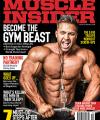6 Things to Never Do on Triceps Day

Are you making one of these common blunders on arm day? Let’s analyze the chief culprits and fix ‘em!
You know that virus going around the gym, the one that sickened your buddy with pink-eye and kept him sidelined from his workouts? Yeah, that’s notthe infection we’re talking about today. Instead we’re eyeing what happens when you watch someone else’s bad form on an exercise and then duplicate it yourself.
Like a nasty virus, replicating another trainer’s bad form spreads quickly around the gym, which has the unintended result of ultimately reducing stimulus to the target muscle and spreading it across other muscle groups. Soon enough, a legion of trainers is performing a movement incorrectly. (Don’t think so? How many guys do standing rotator-cuff exercises with a dumbbell? It’s epidemic in my gym and oh so totally ineffective!)
But we’ve got a vitamin C of sorts in hand, a collection of the chief blunders that folks are making in the gym, and we’re providing the Rx for each. Time to take the medicine.
1. Never start a triceps workout on cables.
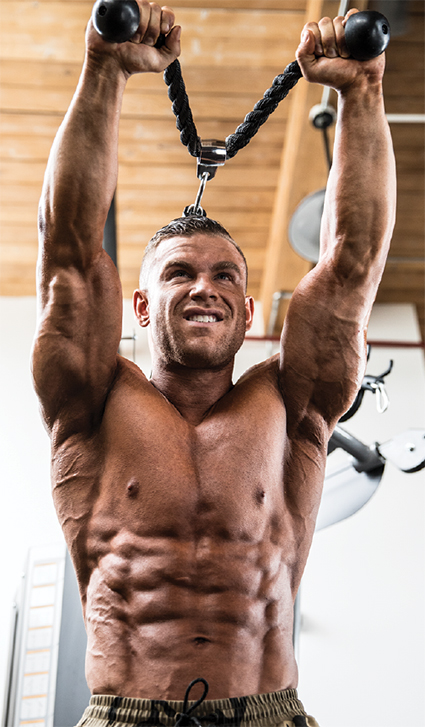
That advice you got to begin chest day with bench presses, legs with squats, and back with rows or deadlifts … that applies here, too. What those exercises have in common is that they’re all multi-joint movements that recruit the greatest amount of muscle mass, allow you to push the most weight, and have a favourable hormonal kick to boost strength and size gains.
You don’t achieve near that with single-joint moves, so we have to ask, why do so many trainers begin their triceps workouts with press-downs? While single-joint triceps movements may be great to warm up the elbows, I don’t recommend starting there on triceps day when the heavy lifting begins. Better choices are multi-joint triceps exercises including weighted bench dips, the triceps dip machine, close-grip bench presses, and parallel-bar dips. On body-weight exercises such as dips, use a weighted belt to ensure muscle failure in the 6- to 12-rep range.
Save the single-joint stuff for later in your triceps workout.
2. Never allow your elbows to flare out.
 Elbow extension is the technical name for how the triceps are involved, but something bad happens when you allow your elbows to flare: The tension of the triceps is reduced and gets picked up by the pecs.
Elbow extension is the technical name for how the triceps are involved, but something bad happens when you allow your elbows to flare: The tension of the triceps is reduced and gets picked up by the pecs.
“If there’s one tip that applies to virtually every [triceps] exercise in terms of technique, it’s that to truly isolate the muscle and minimize the involvement of surrounding muscles such as the chest and deltoids, you need to keep the elbows in tight as possible,” write Joe Wuebben and Jim Stoppani, PhD, in Stronger Arms & Upper Body(Human Kinetics, 2009). “Allowing them to flare out will, in most cases, reduce the effectiveness of the exercise.”
One distinguishing feature separating a triceps movement from one for chest is watching where the elbows travel during execution. During a dip for chest, the elbows should go wide; during a dip for triceps, the elbows stay tight to your sides. In fact, that applies to other triceps exercises, so keeping them in should be a constant endeavour on arm day. You can see how that also comes into play on such exercises as skullcrushers, overhead extensions, close-grip benches, and the triceps dip machine.
If you have trouble keeping your elbows tight during an overhead extension with a dumbbell, for example, try the same movement with an EZ-bar. By separating your hands, it should be easier to keep your elbows tight and reduce flare.
3. Never allow your elbows to drop during kickbacks.
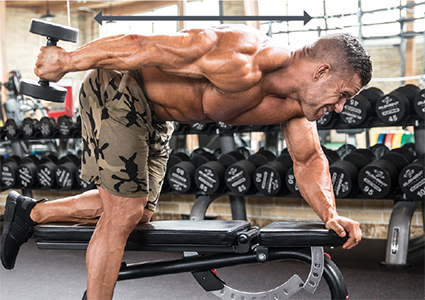
This is a common form blunder even among more experienced lifters. From a bent-over position, your elbow should be locked by your side—upper arm parallel to the floor!—to make this single-joint movement most effective. But dropping the elbow on the negative and bringing it back up on the concentric turns this into a multi-joint delt exercise, limiting its triceps effectiveness.
Let the elbow serve as a hinge and locked by your side; use the mirror if you have to.
Bonus point: The more you drop the elbow, the more likely you make this a movement in which you push withgravity, not against it. Even advanced lifters make this mistake! On the eccentric, do not bring the dumbbell any more forward than the point in which your forearm is perpendicular to the floor. It’s simply of very limited value to push with gravity on the return.
4.Never lock out your elbows.
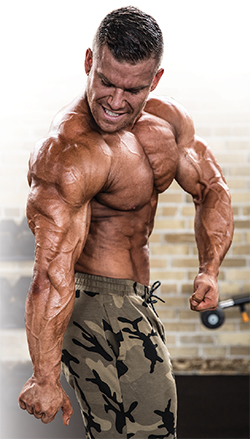
Some triceps exercises (when done correctly) allow you to lock out your elbows; others don’t. (I would argue you can’t lock them out when doing an exercise such as kickbacks, just as you can’t lock out your knees during leg extensions.) But with close-grip benches and dips, for example, you can. Locking out entails taking the range of motion to its extreme, which can shift the stress from the triceps to the elbow joint itself. With a heavy load and momentum, it can actually damage the joint.
That’s counterproductive to building muscle and bad for the joint. Make sure your head is in the game and not wandering to prevent going beyond the recommended ROM. If you already have sore elbows, try going about 10 degrees shortof the end of the range of motion to reduce maximum surface contact of the adjoining bones.
5. Never skip arms-overhead movements.
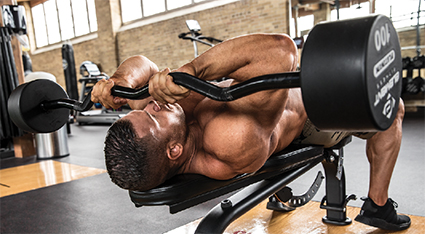
You want a variety of triceps exercises in your routine for better overall development, but arms-overhead movements offer a special benefit: They better stretch the triceps’ long head. In fact, the long head attaches at the shoulder blade, meaning that it doesn’t get fully stretched unless your arms are positioned overhead. When a muscle is fully stretched, it’s capable of a stronger contraction than one that isn’t fully stretched.
Not everyone agrees with this thinking, and there’s limited research available (it seems folks in the industry prefer to study things that make money, like supplements!), so the arguments are mainly theoretical. Still if there’s an edge, don’t leave it on the training table. Types of arms-overhead movements include overhead extensions with an EZ-bar, dumbbell(s), cables (rope or EZ-bar), and even some machines. Don’t forget to lock your upper arms still beside your head so they act as a hinge, and don’t let your elbows flare.
6. Never train tri’s immediately before delts or chest.
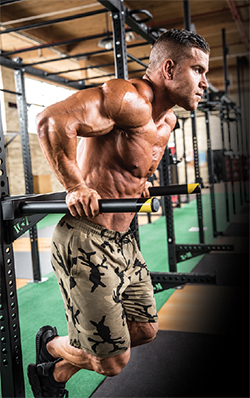
I see it all the time: guys who prioritize big arms and so do their biceps workout before back and likewise hit triceps before the other pushing muscle groups. It’s not that it’s so bad for your triceps, really, but that approach will severely limit your chest or delt potential.
Larger muscle groups should always be trained first before smaller ones. Because the triceps are fairly small but are important in multi-joint chest-pressing (and overhead shoulder-pressing) motions when extending the arms, they need to be fresh to push the very heavy weights. Do triceps first and instead they’ll be highly fatigued, which will clearly hinder your pressings efforts, including both the poundages and/or reps completed. My personal view is that I don’t even like them sore from DOMS when training chest or shoulders, so I configure a split in which the triceps is not done within 48 hours ahead of one of those other muscle groups.
Remember, a muscle grows during rest (in the presence of good nutrition), so your training split matters. In a worst case, you never want to be working triceps, chest, and shoulders on consecutive days; that would mean the triceps would be worked three days in a row.

